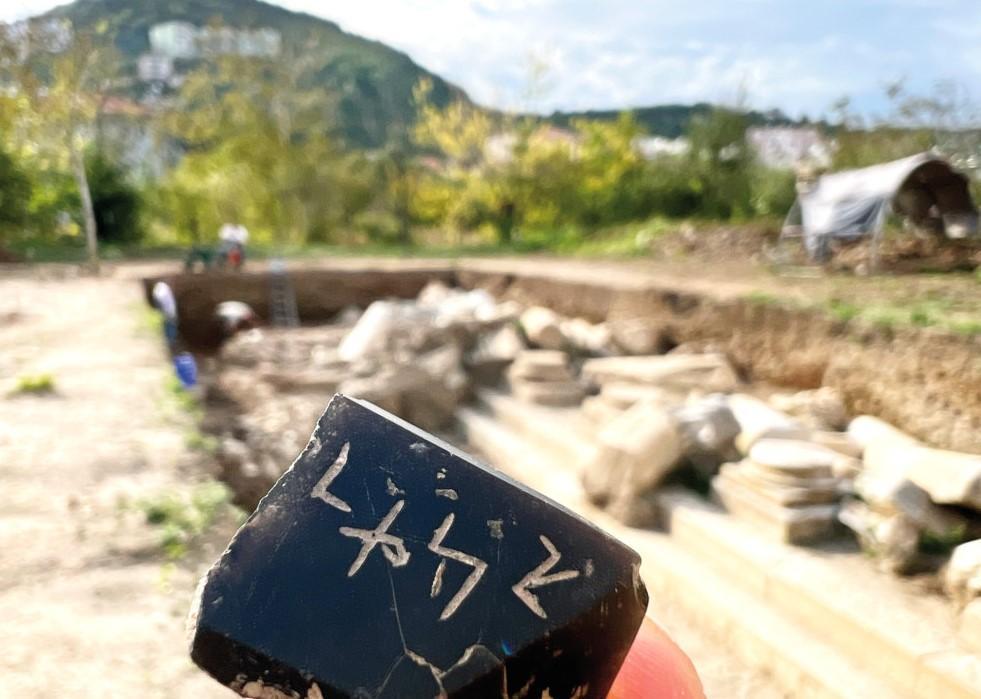Amulet found in Amastris excavations
BARTIN

Excavations in the ancient city of Amastris, located in the Black Sea province of Bartın’s Amasra district, have unearthed a pyramidal stone talismanic amulet.
The Amulet, which has never been seen before in the region and is the only example found in the Roman-era layer during the excavations in Anatolia, is set to be exhibited in the Amasra Museum soon.
Although it has not become clear yet, many historical columns and objects have been unearthed in the area, which is considered to be a “stoa,” during the excavations that started in June this year. Among them are nearly 100 coins from the
Roman, Imperial and Byzantine periods and more than 200 small finds made of metal, glass and bone.
The dimension of the architectural structure, in which the works have been carried out, was determined to be approximately 9 meters, with its huge columns, Corinthian capitals and superstructure elements unearthed.
One of the most important objects, which was unearthed during the excavations and which excited the archeology world, was the Amulet in a pyramidal form with engraved lines. Fatma Bagdatli Pine, the head of Bartın University’s Archaeology
Department, noted that the artifact is the only example found in a Roman structure during excavations in Anatolia.
“It is a unique artifact that was found in the middle of the 2nd century layers inside a marble Roman structure and dated to the 2nd century. There is a figure at the base of the work. From now on, we will try to find out who was the person carrying it. Was it a priest or a religious official?” Pine said.
















